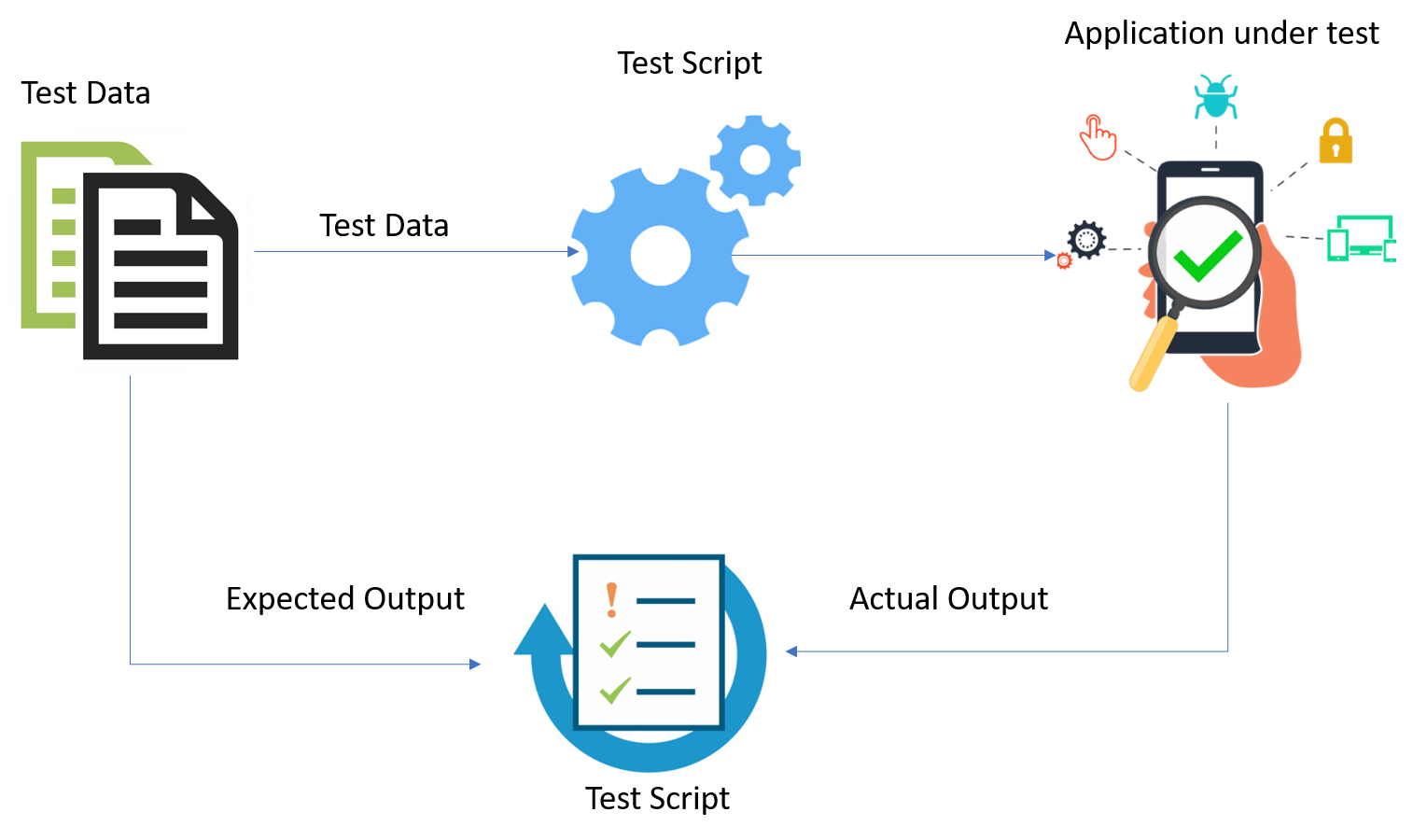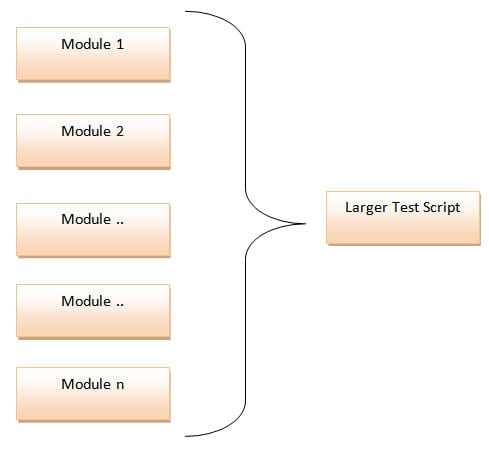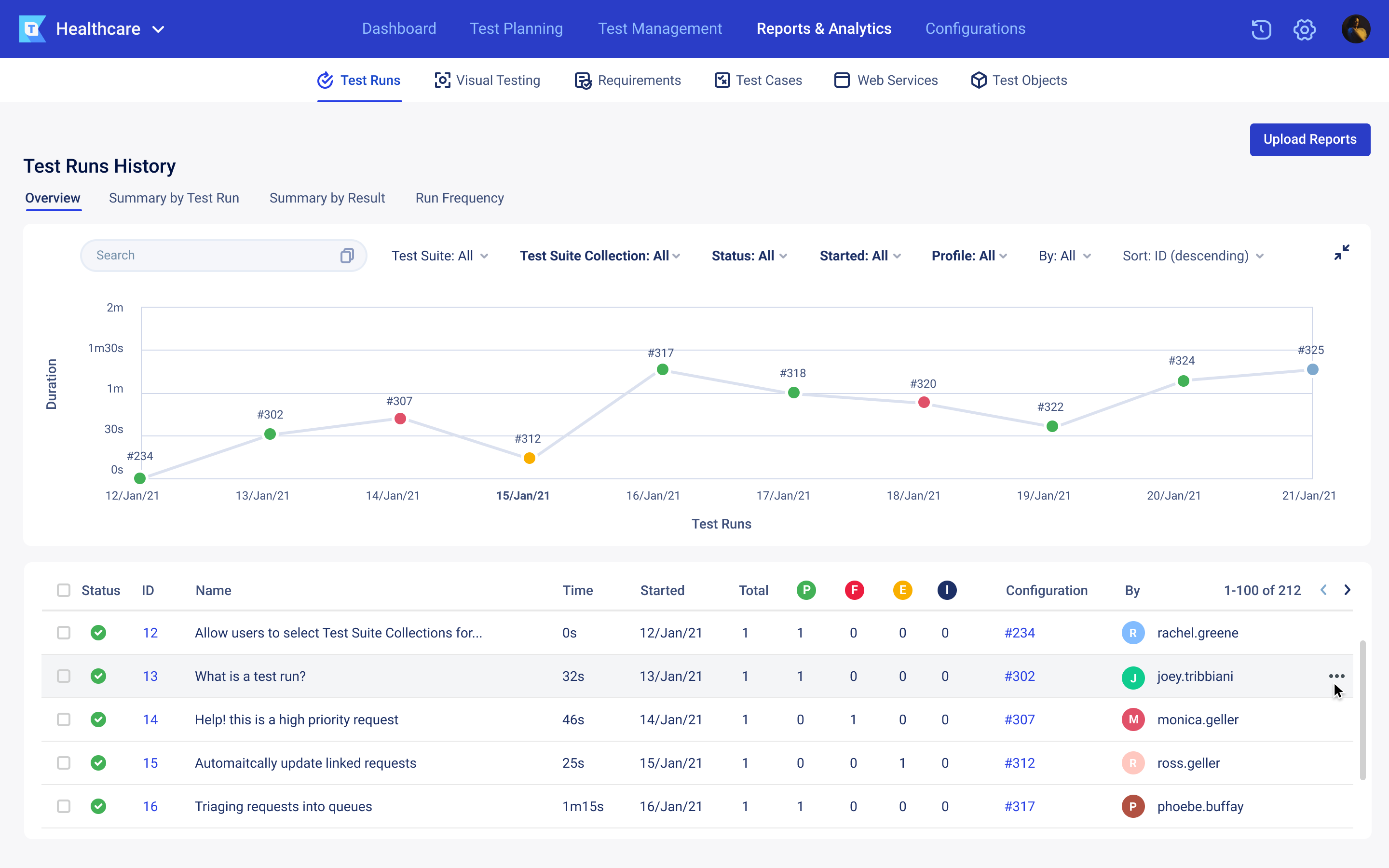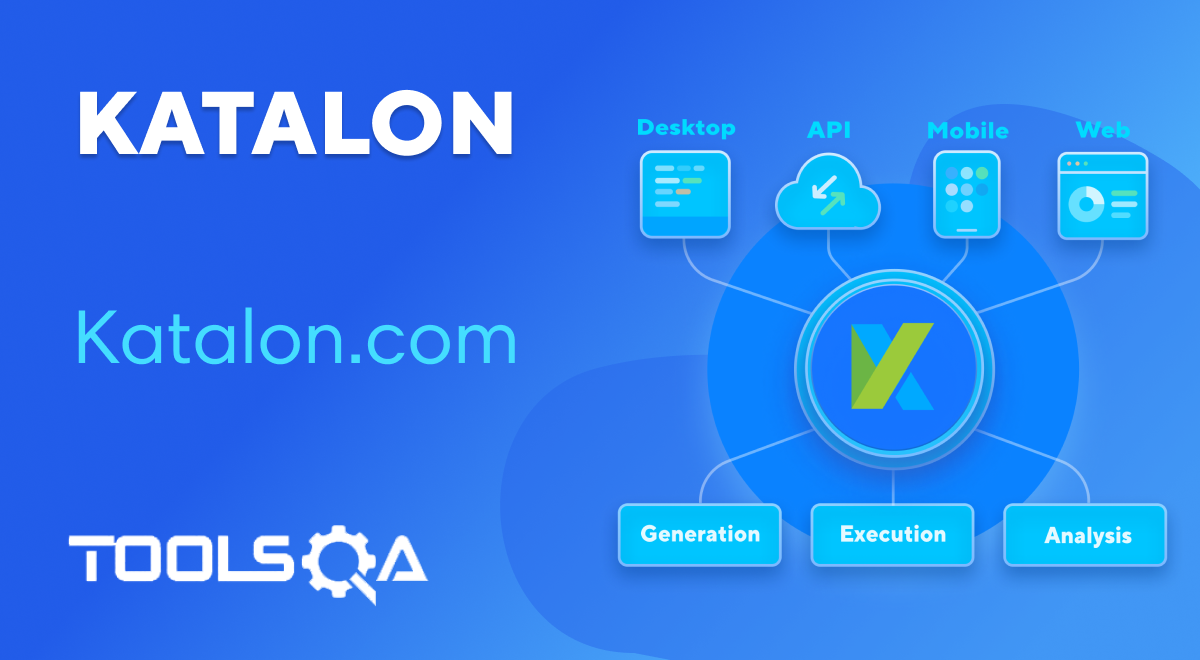In 2020, Global market insights reported that the automation testing market has exceeded USD 15 billion. This was not a surprising figure. The automation testing market has been growing at a continuous 16% year-on-year rate since 2011. It is expected to cross USD 40 billion in 2027. What could be the reasons behind this exploding growth? The complicated projects that take a long time with manual testing? The agile process that asks for the software to be shipped as soon as possible? Or the repetitive tasks that lead to errors when done the manual way? That could be a debate for another time but one thing is sure enough! If automation testing is growing at such a rate then the medium that helps perform it is growing at the same rate too. Yes, the test automation framework makes everything possible and are used extensively all around the world today.
Test automation frameworks are developed and released constantly to cater to the QA needs. You might find one automation framework a bit inclined towards web app testing while others focus solely on user interface testing. In such a scenario it becomes a bit hard for a tester or a QA engineer to decide on which framework to settle for the project. Therefore, we have crafted this post to enlighten you about the test automation frameworks and the different angles that you should look for while settling for one.
Table of contents
- What is a test automation framework?
- Why do we require a test automation framework?
- Types of test automation frameworks.
- Should you build your own framework?
- How to choose the best framework?
- Analyzing Katalon Studio for test automation.
What is a test automation framework?
For an automation engineer, a test automation framework is a friend and something without which it is impossible to run automated tests today. It is not a single tool but a collection of multiple tools, plugins and standards that let you write automation scripts easily. Sometimes the framework comes specifically to a part of automation testing. For example, Espresso, developed by Google, uses JUnit for UI testing. This confines a tester to learn JUnit if you want to use Espresso. But there are automation frameworks that are rich in language support and give testers freedom to choose the language of their choice.
A test automation framework gives you a structure before starting the actual scripting part. You get integrations and other features (discussed later in the post) that help you speed things faster, increase your efficiency and bring more output as compared to the conventional method.
Here, I would like to mention that using a test automation tool is extremely important but not necessary. If you like to use tens of tools and can manage them simultaneously, you can choose that road too. But in 2022, it is neither advised nor recommended.
Why do we require a test automation framework?
So the next question that comes to mind is, is a test automation framework really that important? What are the things that it offers to us? A few of the benefits are mentioned below although they are not restricted to this list.
- Increased efficiency with faster test cycles.
- An improved test coverage ultimately improves the overall software quality.
- Fewer things to maintain when you get everything in a single place.
- Test automation frameworks allow reusability of code that is widely appreciated in the software industry.
- Easier bug detection and early correction lead to lower costs in the project.
- Human involvement is reduced drastically with an automation framework as multiple plugins support helps in multiple domains.
- Test automation frameworks bring out detailed reporting features that are hard to prepare manually. These reports can then be shared with other people in the team for analysis.
- Faster test executions result in a faster return on investments which is appreciated in the organisation.
If you can think of additional features of test automation frameworks, do let us know in the comment section or email directly to [email protected].
Types of test automation frameworks
It's true that there are all kinds of applications available in the market. Some are to let you buy the products and some are to increase the security of your smartphone. With so many types of applications, you cannot always use one framework. Similar to various applications that are tested through various methods, we have various frameworks to accomplish these tasks. They specialize in a field better than their peers and is always recommended to choose one based on its strength. The following types of test automation frameworks can be explored in this direction.
Data-driven testing frameworks
Data-driven testing frameworks are used for efficient data-driven testing. These frameworks keep the test scripts isolated from the test data used to feed inside those scripts. They are best to use when you have to input multiple data for testing on a single application/target field etc. For example, a lot of variables are required to test the functionality of logging in the system. Data-driven testing frameworks are best for such scenarios.

Key features of data driven testing frameworks
- Facilitates code reusability by using the same code for multiple data sets.
- Saves a lot of time by automatically feeding the data.
- Unexperienced QA and testers can easily be trusted with these frameworks as they are easy to learn and code.
- Allows the tester to focus more on setting up quality data for input rather than coding them in the scripts. This improves the quality of the application.
Modular based testing frameworks
Modular based testing frameworks focus on the individual modules of the application rather than looking at the whole application as one. These modules can be anything as per the tester's choice. They can be logically divided into sections, an actual module in the application, bigger complex functions etc. Modular based testing frameworks test these applications on each module without affecting any other module in the process. This helps us in boiling down the error zone to a smaller area while debugging for errors.

Key features of modular based testing frameworks
- A module helps in focusing on a smaller section in the application. This way we get high-quality modules and eventually a high-quality application.
- Any change in the module will affect only the related test scripts. The complex co-relations between scripts can be eliminated through isolation.
- One module's script can be used with other modules enhancing the code reusability of the system.
- Dividing the application into modules reduces the maintenance work of the application.
Linear testing framework
Linear testing frameworks are also called record and replay testing frameworks because of the way they work. These frameworks are suitable for performing repeating actions once they are told what is required from them. So a tester first does some actions such as entering a URL, navigating through a link, entering values in some fields etc. The framework notes this and converts it into step-wise instructions with codes underneath the hood. From the next time, the framework will take the command from you for the same actions. As a tester, you would come across Selenium record and replay a lot in professional life. If you are interested to learn more about it, do visit our detailed guide on the same.
Key features of linear testing framework
- Linear testing frameworks do not require any coding to work so you can remove this requirement from the job description and focus purely on exploring applications for bugs.
- Linear testing frameworks are best for beginners to work with.
- Usage of the linear testing framework can considerably speed up the testing process.
Keyword driven testing framework
Keyword driven testing framework, also known as table driven test automation framework, uses keywords to execute the tests on the application. These keywords are stored inside the database with an action corresponding to the action of the tests. For example, logging into the system is script data (or our final aim) and inputtdata is a keyword that determines we are aiming to input data here. Similarly, verifyuser is also a keyword. Finally, you can write the code to execute these actions based on the keywords bringing exhaustive testing to the application.
| Keyword | Description |
|---|---|
| inputtdata | Input data on signup |
| openBrowser | Open browser instance |
Key features of keyword driven testing framework
- Very little scripting knowledge is required since keywords and actions almost always follow a standard path.
- Facilitates code reusability.
Library architecture test automation framework
The library architecture test automation framework is a refinement of the modular test framework. Here, we combine the scripts with similar objectives and save them in libraries. Through coding, we can then aim at certain specific libraries that will execute all scripts under it. Libraries are divided logically i.e. the scripts under them are all part of fulfiling the same objective but with different tests. It provides a clean architecture and systematic test execution.
Key features of library architecture test automation framework
- The logical division of scripts or modules decreases the maintenance work.
- For the same reason as point 1, library architecture is quick to pick up on scalability as we can find the correct library for our objectives very easily.
- Similar to the modular test automation framework, this framework too, enhances code reusability.
The above-mentioned frameworks are specific to their speciality. But that does not mean one framework can perform only one of the tasks among these. There are a lot of hybrid test automation frameworks that combine the power of two types of frameworks to give a tester a complete environment for testing. One such framework is discussed at the end of this post.
Should you build your own test automation framework?
The types of test automation frameworks can make you think twice about exploring all the options. At this point one question can cross your mind - if I can, should I go ahead and build one test automation framework by myself? Or vendor-provided tools can satiate all my requirements?
A big organisation is a top contender in putting this question on the table. They have the workforce, they have the time and they have a lot of money to put on investments like this. But no investment is a good investment if you could have saved this time and put it on something else without sacrificing anything. So what could be the parameters that can help you balance your thoughts when it comes to this question?
Cost
Cost is the foremost reason to look forward to. If you are an individual developer, you can skip this section and settle on a vendor based immediately. That's the best choice for you. If you are a startup or a small enterprise there are a few things to be calculated. First, engineers will be working on building the framework. Let's multiply this number by the average salary of the engineers. Let's multiply again with the time it will take (considering months). So our equation becomes:
Number of engineers x Average salary of 1 engineer in months x number of months it will take.
These numbers, however, will depend on the requirements of the framework in your company. In the United States, the average salary accounts for around USD 120k to 140k. So you can do the rest of the math.
Vendor based test automation frameworks are generally priced at a very low monthly cost. A few of them are even free to use (open-source to be precise). So if you are wondering that you only need the framework for one project, vendor based test automation frameworks seems to be a feasible choice.
Big enterprises generally do not care about the cost factor unless it is too high. Therefore we can skip this section for them.
Maintenance
Next comes the most worrying factor for individuals, small businesses and big organisations - the maintenance of whatever you are developing. Not only frameworks, even if you are setting up your own servers or data centres or anything else, it needs constant maintenance.

Maintenance is a major cost eater in the software industry because no one can afford any type of downtime. Maintenance cost, in certain cases, has been found out to be as high as 90% of the complete software development cost. Due to this, the budgets also get miscalculated a lot of time. A team of dedicated engineers to look for software refinements and hardware maintenance can make you think about the returns on these investments. Vendor tools do not ask for maintenance from the end-user as they have their engineers to do that. As a tester, you just have to use the tool as much as you want.
Scalability
Scalability is something that is always in the minds of organisations whether they are big or small. When an organisation expand its operations, it also increases the resources that make it scale successfully. If my web application was getting 100 thousand views but three months later I have 10 million views, can I use the same server to cater to all the requests? This ripple effect has the same outcome on the testing operations. Once you have scaled up, the automation tests increases, the number of people involved increases and you start introducing complex things in testing.
As an on-premise test automation framework set up, you have to modify then remodify again and again when you are scaling in the market. You can save yourself from all this trouble if you are choosing a test automation framework developed by vendors. Their infrastructure let you introduce as many people or parallelization (for example) as you want with just a couple of clicks without ever worrying about the scalability.
Customizations
A major area where self-made test automation tools have no upper match is when it comes to the customization of the tool. When you are building the framework yourself, you can build it with whatever features you want that can work in whatever way you want. The developers have full control over it.
Vendor based tools do not provide this much flexibility especially if the demand is from a couple of customers only. If there is a requirement from a lot of users then the vendor definitely takes that into consideration. Otherwise, they try to build a tool with all the generic features to cater to a larger audience.
InspiredTesting is one of the groups that say that they are happy in building their own framework because of the customization power they have in hand. The kinds of requests their clients were asking were much better-taken care of through personal customization than any tool available in the market. On the opposite side, Michael Larsen (a senior QA) says that he worked for a company that built their own test automation framework on top of Selenium and it did not go well. The reasons were that 10 years later, it did not compete well with available options and features due to lack of development. Also, it was developed in Perl for which engineers were not easily available.
How to choose a test automation framework?
The most important question after gaining in-depth knowledge about the test automation framework is - how to choose one for myself? As for the feature part is concerned, I find all the tools delivering almost equivalent power to their customers. For example, you would find a lot of tools with record and replay features or providing snippets for faster test script creation. What we would like to highlight here is not features but convenience for the tester. What are the things by which a tester can find a complete framework with ease of testing? The following sections seem to fit the description as per our analysis.
Learning curve
The first thing to look for in the tool is the learning curve or how easy the tool is to learn for a complete beginner. If the tool is easy to learn it saves a lot of time for the organisation and you can start testing early.
Cloud-based
Computer scientist Paul Maritz once described cloud-based technologies as, "The cloud services companies of all sizes. The cloud is for everyone. The cloud is democracy." A strong statement that determines how cloud-based services are growing at a staggering rate. It is estimated that cloud-related spending will reach $1 trillion in 8 years.
Once cloud was just to save your personal files. Today, cloud is everywhere. From cloud-based editors to cloud-based servers such as EC2 from AWS, the cloud is seen as the third wave of evolution in computers. There are two simple reasons for this growth. First, cloud-based services are accessible from anywhere. You can use my PC or your friend's, you will get all your files, reports, test scripts everything on your dashboard. Second, cloud-based services do not run on personal systems which is a huge advantage as frameworks are heavier and can demand high memory that can slow down the system.

Cloud-based systems also eliminate the delay in projects if anything happens to your system. They also provide collaborative features for multiple team members and the upgrades are done automatically. The user does not need to worry about downloading a newer version and installing again and again.
Integrations
Integrations is an extremely important factor to look forward to in a test automation framework before choosing one randomly. It give power to your framework and let you accomplish multiple tasks from a single place without worrying about management or complex connections. For example, an issue tracking system may allow you to raise an issue on the third platform from the framework once a test fails. You don't have to navigate to another tool and start the process from scratch.
The types of integrations you should look for are the ones that you will definitely use along with the ones planned for the future.
CI capabilities
A majority of organisations adopts agile and DevOps practices today. With thousands of test cases ready to be tested on each releasing version, it becomes a hectic and challenging task to execute all of them repeatedly every 15 days (or whatever your sprint size is). For this work, we take the help of a CI build system that builds, tests and forward the version for deployment to the next stage. With CI, we don't need to worry about taking our new version to another platform and building it, then testing it on another platform and then reporting back. CI does all that for us automatically. A version control system is probably the best choice for this work.
A framework with CI capabilities can integrate this build system inside it. So whenever we push any new version the build and test status can be monitored from within the system. A log can also be generated for the same. Things become much easier when we use a framework integrated with CI.
Codeless and low-code support
Codeless (or no code) scripting is the next upgrade to the low-code methodology where we ask for minimal scripting efforts from the user. If you have not heard about this because of legacy projects, let me start with its current outreach. In 2021, the low-code scripting market had crossed USD 13 billion dollars and is projected to grow to USD 45 billion in the next four years.

While low-code and codeless scripting is a topic for another day, we can briefly introduce it as something that does not include programming but other methods of scripting. For example, drag-and-drop UI elements from the web application is a rather famous method to create test cases and business logic. In the current situation, if you are working on legacy projects, you won't probably require this feature. However, if you consider future projects (the new ones) and look at the trends of codeless acceptance, you should definitely consider it.
Language support
Another factor to consider while choosing a test automation framework is the number of languages it supports. The problem here is that there are a lot of programming languages that can be used in testing the software and no one knows all of them. So testers keep working on a couple of their favourite languages and develop expertise in them. However, it may happen that the framework you choose does not support any of the languages that your team members know of. The only options you are left with are either hiring automation testers familiar with the language or training your team for it. Needless to say, both of these options are expensive and should be avoided as much as possible.
The best path here is to choose a framework that supports multiple languages and has an active development so that whenever needed, more new languages can be added.
Community support
The learning curve of a framework is the efforts it takes to get familiar with the basics of its offerings. In the long term, this learning curve merges with community support. The more support from the community a framework has, the more foundational learning you will achieve in your testing journey. A vast community is always there to resolve your queries and take up the things that are not yet implemented by the vendor.
A tip while looking for community support is to use frameworks that have already proven their worth in the test of time. Generally, older and actively maintained frameworks have exceptionally good communities.
Reporting
The final thing to look for in a test automation framework while choosing one is its reporting capabilities. Reporting is essential in multiple practical scenarios that save a lot of time in the organisation. While executing the tests everything is fresh in your mind and can be clearly understood but what happens when I talk about the same tests three months later?
Reporting is also very important for people who are not related to testing such as stakeholders, developers and other team members. Communicating the final results to them is a bit challenging as you need to do that in non-technical terms after investing your own time. That too does not guarantee whether they will understand it completely or not. Reports can narrow down this gap by providing a pictorial and statistical representation of the final results. Team members can analyze such reports quickly.
Also, remember that just generating the reports is not enough. Look for a tool that generates an in-depth report and is not too technical as it can confuse non-technical people and your clients.

Source: Smart Test Reporting in Software Testing | Katalon TestOps
Alright! I believe we have covered everything in this in-depth guide on test automation frameworks. With the above section, we are now aware of how to choose a perfect test automation framework for our team, organisation and project. I think this is a perfect time to introduce to you a test automation framework that has been executing test scripts globally for the past seven years. It might check off a lot of the points in your checklist as it does mine. Let's have a brief overlook at Katalon's tool.
Performing test automation with Katalon Studio
Polishing your testing skills and excelling in your professional career requires you to befriend an automation tool that is reliable, provides you support, has all the latest features and brings with it an unparallel experience. Katalon Studio is one such automation testing tool released in 2015 and built on top of famous open source frameworks - Selenium and Appium. This gives Katalon the robustness of Selenium, strength of Appium in addition to its own qualities. With more than 700 reviews and a 4.5/5 score on Gartner, Katalon is able to perform automation testing on a variety of domains such as web-based testing, API testing, mobile app testing and desktop testing (Windows).
Apart from the above plausible features, Katalon has much more to offer to a tester and an organisation.
Pre-defined project templates and built-in keywords
Katalon reduces the overall test creation time by introducing project templates and built-in keywords. The tester is also free to define their own custom keywords and use them to create test cases quickly.
Quick to grasp
Katalon has a very low learning curve. With a simple-to-use interface and extensive documentation, testers can learn the tool very quickly. So if you are a newbie in testing or are switching automation tools to Katalon for some reason, you will also be able to grasp the flow of testing in no time.
Intelligent record and playback
Katalon takes the record and playback method to another level by introducing an advanced record and playback system. This intelligent system eliminates all the anomalies of the conventional record and playback systems such as reusability and painful maintenance. With this new system, the tester can continue the recording from an existing test case and gets the freedom of editing the test cases (most parts) even while recording.
Low-code support
Low-code testing is gaining popularity today because of its inability to depend completely on programming from the tester. But to create, run and maintain automation tests in low code and scripting methods, you need an equally powerful tool with support. Katalon provides a ready-made framework, a built-in recorder and pre-defined test methods to provide a tool for all testers at all levels.
Support for multiple methodologies
Katalon provides seamless support with multiple testing methodologies for testers of all kinds. These include test-driven, behaviour driven, keyword-driven, data-driven and page object model testing.
Integrations
Katalon provides a long list of integrations for the tester to dedicate all his time in testing and not worrying about working with multiple tools. The automation tool provides native integrations to ALM such as JIRA, CI/CD such as Jenkins and Travis CI, collaborative software such as Git and testing environments such as Postman.
Parallel testing support
Katalon provides parallel testing support with multiple browsers. The tester can also use cross-browser testing solutions such as TestCloud which can give you access to more than 2000 browsers for a quality testing experience.
Detailed reporting
Katalon provides detailed and analytically processed reports for the teams to analyze and make future decisions. With its smart test reporting feature, you get a lot more than the reports generated by other tools. This may include your project progress, viewing test activities on different timeframes and you can retry failed tests immediately through Katalon studio. The user can export these reports in formats like HTML, PDF, CSV and Excel sheets.
The process of performing automation testing with detailed steps can be learnt through their extensive documentation available at Katalon docs. Along with it, you can explore a lot more at Katalon's website. All this comes at a cost of as low as $69 per month.
Final words...
Test automation frameworks are in active development. They are testers for convenience, speeding up the test cycles, support, saving costs and a lot more. In this complex and crowded world, it is very easy to get lost and spend your precious time determining which tool is the best for you.
In this post, we tried to highlight the test automation frameworks from a beginner's point of view to an expert. From what to why to how I hope this post enlightens you in every aspect of a test automation framework and help you choose the best one for your next project.




